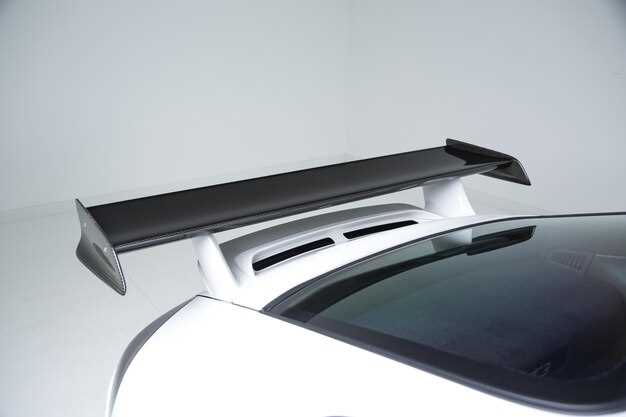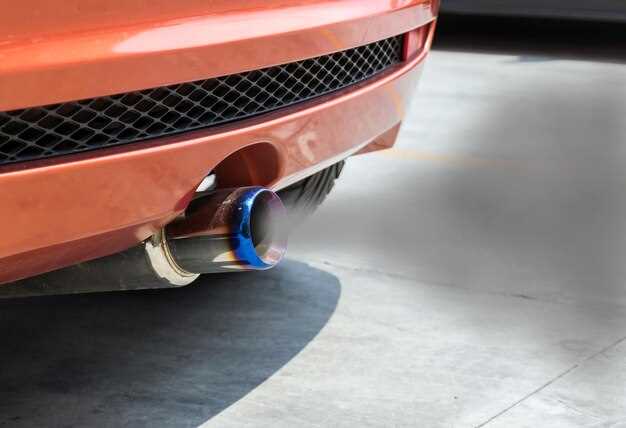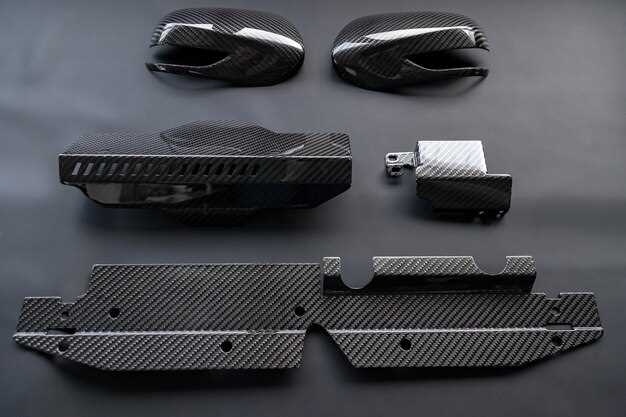
Aerodynamic tuning plays a crucial role in enhancing a vehicle’s performance, especially in high-speed scenarios. By optimizing airflow around the car, components such as spoilers and splitters are utilized to increase downforce, which fundamentally improves traction and handling. This dynamic adjustment allows vehicles to maintain stability during cornering and acceleration, ultimately contributing to a more responsive driving experience.
Understanding the principles of downforce is essential for effective aerodynamic tuning. As a vehicle moves at speed, the air pressure changes, leading to forces that can either lift the car or push it towards the ground. Spoilers and splitters are designed specifically to manipulate these forces, ensuring that the right amount of downforce is created to maximize grip without compromising speed. Through careful calibration, tuners can achieve the perfect balance between aerodynamics and performance.
Moreover, the combination of spoilers and splitters provides a comprehensive approach to improving vehicle dynamics. While spoilers disrupt airflow to reduce lift at the rear, splitters create a high-pressure zone at the front, directing airflow efficiently under the chassis. Together, they facilitate a significant increase in downforce, enabling racers and automotive enthusiasts alike to unlock the full potential of their machines, whether on the track or the road.
Aerodynamic Tuning with Spoilers, Splitters, and Downforce

Aerodynamic tuning is a crucial aspect of optimizing vehicle performance, particularly in motorsports and high-performance driving. The use of spoilers, splitters, and downforce plays a pivotal role in enhancing a vehicle’s aerodynamic efficiency, stability, and grip on the road or track.
Spoilers are designed to disrupt the airflow over the body of the vehicle, thereby reducing lift and increasing downforce at high speeds. By strategically positioning spoilers on the rear or front, drivers can improve traction, allowing for better cornering performance and enhanced stability during aggressive maneuvers.
Splitters, often mounted at the front of the vehicle, serve to manage the airflow beneath the car. They help create a pressure difference between the top and bottom surfaces, which contributes to increased downforce. This additional downforce boosts the vehicle’s grip, particularly during high-speed cornering, reducing the likelihood of understeer or oversteer.
Downforce itself is a critical factor in aerodynamic tuning. It refers to the aerodynamic pressure that keeps the vehicle firmly planted on the ground, counteracting the effects of lift caused by high-speed airflow. By maximizing downforce through the effective placement of spoilers and splitters, vehicles can achieve higher cornering speeds and improved overall handling.
Effective aerodynamic tuning involves a balance between downforce and drag. While enhancing downforce improves grip, it can also increase drag, which may hinder acceleration and top speed. Therefore, tuning these elements requires careful consideration of the vehicle’s intended use, whether for racing or daily driving.
In conclusion, the interplay between spoilers, splitters, and downforce is fundamental to achieving optimal aerodynamic performance. By understanding and implementing effective tuning strategies, drivers can significantly enhance their vehicle’s handling characteristics and overall performance on various terrains.
Understanding the Role of Spoilers in Vehicle Stability
Spoilers are essential aerodynamic components designed to enhance vehicle stability by managing airflow around a car. Their primary function is to create downforce, which increases the grip between the tires and the road surface, particularly at high speeds. This downforce is crucial for maintaining control during aggressive maneuvers, such as cornering and braking.
By disrupting the airflow, spoilers help reduce lift, a natural aerodynamic phenomenon that can cause vehicles to become less stable at high speeds. The application of spoilers allows for fine-tuning of a vehicle’s aerodynamics, ensuring optimal performance in various driving conditions.
The impact of a spoiler on vehicle stability can be categorized into two main areas: the increase in downforce and the reduction in drag. The effectiveness of a spoiler depends on its design, angle, and placement on the vehicle.
| Aspect | Effect of Spoilers |
|---|---|
| Downforce | Increased grip, improved handling, better cornering stability |
| Lift Reduction | Minimized tendency for the vehicle to become airborne, enhanced high-speed control |
| Drag | Potential increase or decrease depending on design; critical for optimizing top speed |
| Placement | Rear spoilers generally improve stability; front spoilers can enhance turn-in responsiveness |
While the addition of spoilers can significantly improve a vehicle’s performance, it is essential to consider the entire aerodynamic profile of the car. Effective tuning involves integrating spoilers with other components, such as splitters and diffusers, to create a balanced setup that optimizes downforce and minimizes drag.
In conclusion, spoilers play a vital role in enhancing vehicle stability. Their ability to generate downforce allows for better performance during high-speed maneuvers, providing drivers with the confidence needed to navigate challenging conditions effectively.
How Splitters Enhance Front-End Grip and Handling
Front splitters are essential aerodynamic components that significantly improve a vehicle’s performance by increasing downforce at the front end. When a car accelerates, air flows over and under the vehicle, and the design of the splitter alters this airflow. By extending forward from the front bumper, the splitter creates a pressure difference between the upper and lower surfaces, effectively pulling the front of the car down toward the ground.
The increased downforce generated by splitters enhances tire grip, allowing for improved handling characteristics during high-speed cornering. This additional traction minimizes the likelihood of understeer, which occurs when the front tires lose grip before the rear tires. By providing better grip at the front end, drivers can maintain control and take corners more aggressively, leading to faster lap times.
Tuning the splitter’s size and angle is critical; these adjustments affect airflow management and downforce levels. A larger splitter may generate more downforce, but it can also create additional drag. Achieving the optimal balance between downforce and drag is essential for maximizing both grip and overall vehicle performance. Moreover, proper tuning ensures that a car maintains aerodynamic stability at various speeds, enhancing driver confidence.
In summary, front splitters play a pivotal role in enhancing front-end grip and handling by generating increased downforce. Effective tuning of these components allows drivers to optimize their vehicles for performance, resulting in an exhilarating driving experience and improved lap times on the track.
Calculating Downforce: The Science Behind Weight and Traction

Downforce is a critical element in automotive design, playing a vital role in enhancing a vehicle’s traction and stability at high speeds. It is generated primarily through aerodynamic tuning components such as spoilers and splitters, which manipulate airflow over the car’s surface. Understanding how to calculate downforce involves examining the interplay between weight, aerodynamic lift, and the effect of speed on these forces.
The basic equation for calculating downforce is derived from Bernoulli’s principle, which states that an increase in the speed of a fluid occurs simultaneously with a decrease in pressure. As a car moves forward, air flows over and under it, creating areas of different pressure. The difference in pressure results in a downward force that increases with speed. This relationship can be represented as:
Downforce = 0.5 × Air Density × Velocity² × Coefficient of Drag × Frontal Area
In this equation, air density refers to the mass of air per unit volume, velocity is the speed of the vehicle, the coefficient of drag varies based on the shape and aerodynamic features of the car, and the frontal area pertains to the projected area of the vehicle facing the airflow. Optimizing these parameters through tuning can enhance the overall downforce significantly.
In addition to increasing downforce, it’s vital to consider its effects on weight distribution and traction. More downforce results in increased vertical load on the tires, improving grip and allowing for faster cornering speeds. However, excessive downforce can lead to diminishing returns, where additional force might cause instability or increased tire wear. Achieving the optimal balance through proper tuning ensures the vehicle maintains control without sacrificing performance.
Ultimately, the science of calculating downforce lies in understanding how aerodynamic features interact with vehicle speed and weight. By leveraging these principles, engineers and enthusiasts alike can enhance a car’s performance, promoting a harmonious balance between downforce and overall handling characteristics.
Material Choices for Aero Components: Weight vs. Strength
The effectiveness of aerodynamic tuning relies heavily on the choice of materials used in components like spoilers, splitters, and other downforce-generating elements. Balancing weight and strength is crucial in achieving optimal performance.
Key factors to consider when selecting materials include:
- Weight: Lighter materials contribute to overall vehicle performance by reducing mass, enhancing acceleration and handling.
- Strength: Components must withstand aerodynamic forces and road conditions without deforming or failing, requiring robust materials.
The following materials are commonly used in the construction of aero components:
- Carbon Fiber:
- High strength-to-weight ratio
- Popular in motorsports for its excellent stiffness and lightweight properties
- Costly, but offers top-tier performance
- Aluminum:
- Lightweight and moderately strong
- Widely available and cost-effective
- May not be as strong as carbon fiber but more affordable for mass production
- Fiberglass:
- Relatively low-cost option with decent strength
- Heavier than carbon fiber and aluminum
- Suitable for less demanding aero applications
- Plastic Composites:
- Lightweight and versatile, often used in entry-level racing
- Lower strength compared to metals and carbon fiber
- Can be molded into intricate shapes for aerodynamics
When deciding on the appropriate materials, it’s essential to analyze the specific requirements of the automotive application. Factors such as vehicle weight, speed, budget constraints, and desired performance characteristics will dictate the optimal choice.
In summary, the trade-off between weight and strength is a fundamental aspect of material selection for aero components. Striking a balance can lead to significant improvements in vehicle dynamics and overall performance.
What to Consider When Installing Aerodynamic Upgrades
When planning to install aerodynamic upgrades such as spoilers and splitters, several important factors must be taken into account to maximize their effectiveness. Understanding the relationship between downforce and vehicle dynamics is essential for achieving the desired performance improvements.
First, consider the intended use of the vehicle. If the car is primarily for street use, the balance between downforce and drag becomes crucial. Excessive downforce at low speeds can lead to increased drag, negatively affecting fuel efficiency. For track-focused vehicles, however, prioritizing downforce for improved cornering and stability becomes paramount.
Next, evaluate the vehicle’s current aerodynamic characteristics. Conducting airflow analyses, either through computational fluid dynamics (CFD) simulations or wind tunnel testing, can provide insights into how the proposed upgrades will interact with the existing body structure. This data will help predict changes in downforce and drag, allowing for better tuning of the upgrades.
Installation location is another critical factor. Spoilers and splitters should be positioned to optimize airflow over the vehicle. An improperly placed accessory can lead to unexpected turbulence or stall conditions, negating any potential gains in downforce. Additionally, ensure that these upgrades do not interfere with existing components or vehicle functionality.
Consider the materials used for the upgrades as well. Lightweight materials can enhance performance without adding significant weight, which is particularly beneficial in maintaining the vehicle’s center of gravity and overall handling characteristics. The durability of the materials is also important, as aerodynamic components should withstand various driving conditions without degrading their performance.
Lastly, it’s crucial to combine aerodynamic tuning with suspension and tire modifications. Changes in downforce can affect the load on each tire, thus impacting traction and handling. Ensuring alignment between these aspects of vehicle performance will lead to a more cohesive driving experience. Continuous testing and adjustment after installation are recommended to fully realize the benefits of the aerodynamic upgrades.
Real-World Effects of Aero Tuning on Performance Metrics
Aerodynamic tuning plays a crucial role in enhancing the overall performance of vehicles, particularly in motorsports. By optimizing components such as spoilers and splitters, drivers can achieve significant improvements in various performance metrics. Here are some key effects of aero tuning:
- Drag Reduction:
Aero tuning often focuses on minimizing drag, which directly influences top speed and fuel efficiency. Reducing aerodynamic drag allows a vehicle to move through the air more efficiently, leading to higher speeds and improved acceleration.
- Downforce Generation:
Implementing effective spoilers and diffusers can generate substantial downforce, which increases tire grip and stability. This improved traction allows for better handling, especially during high-speed cornering.
- Stability at High Speeds:
Vehicles that are well-tuned aerodynamically exhibit enhanced stability at high speeds. This stability is crucial for maintaining control during racing conditions, reducing the risk of loss of traction or skidding.
- Braking Efficiency:
Increased downforce can contribute to better braking performance. More grip on the tires results in shorter stopping distances, allowing drivers to brake later in corners and improve lap times.
- Weight Considerations:
While adding aerodynamic components may slightly increase weight, the trade-off is often favorable when considering the performance gains from enhanced downforce and reduced drag.
To effectively assess the benefits of aero tuning, several performance metrics are commonly analyzed:
- Laptime Reduction:
Improved aerodynamics can lead to noticeably faster lap times, making it a critical factor for competitive racing teams.
- Fuel Economy:
A well-tuned car can achieve better fuel efficiency, especially during long races where fuel strategy is vital.
- Cornering Speed:
Aero tuning enhances cornering speed capabilities, allowing vehicles to maintain higher speeds through turns.
- Driver Confidence:
Improved aerodynamic characteristics boost driver confidence, enabling them to push the limits of both the vehicle and their own skills.
In summary, the real-world effects of aero tuning on performance metrics are profound. By focusing on drag reduction and maximizing downforce, vehicles can achieve enhanced speed, stability, and control, which are essential for both competitive racing and everyday driving experiences.




